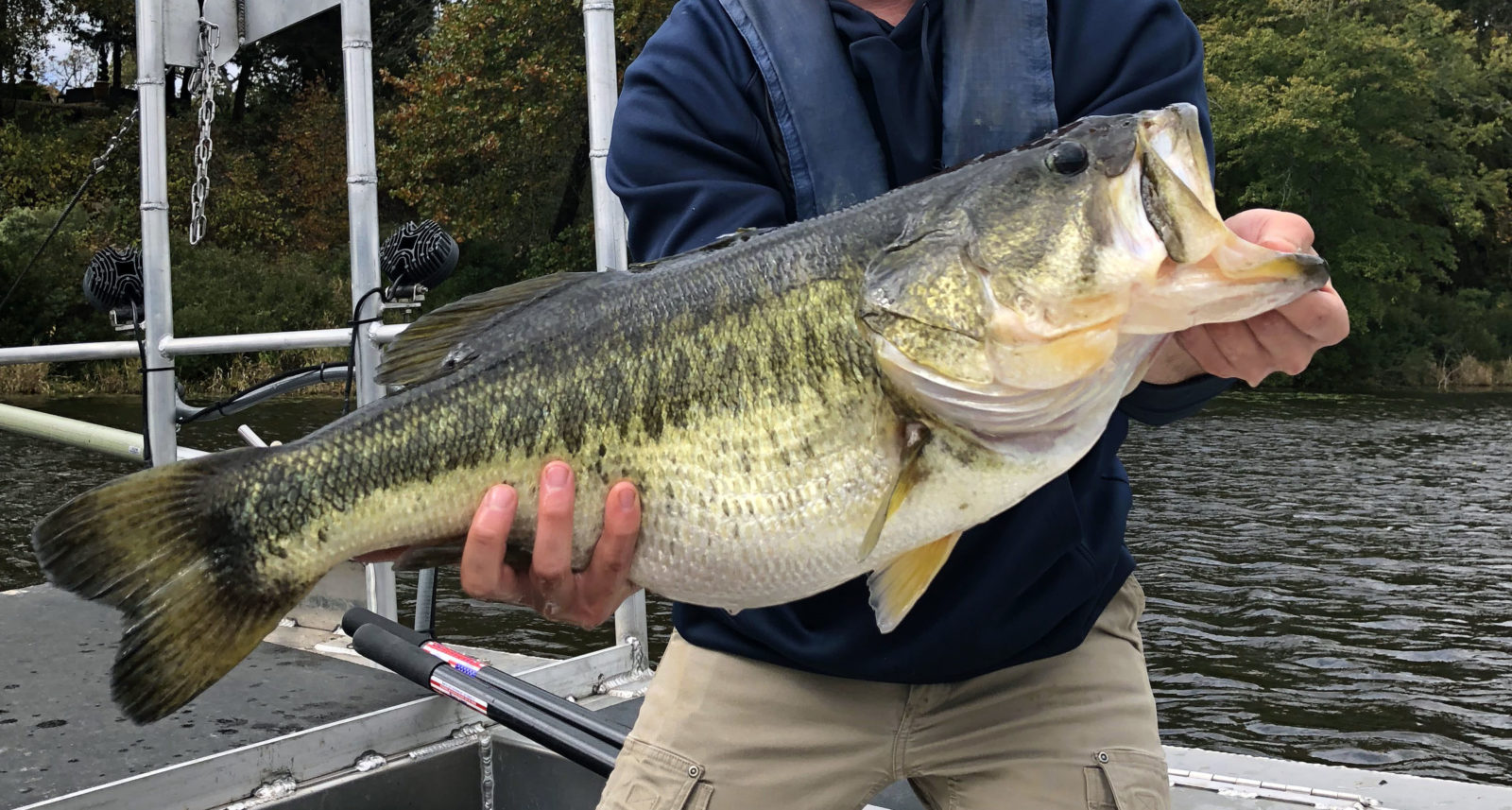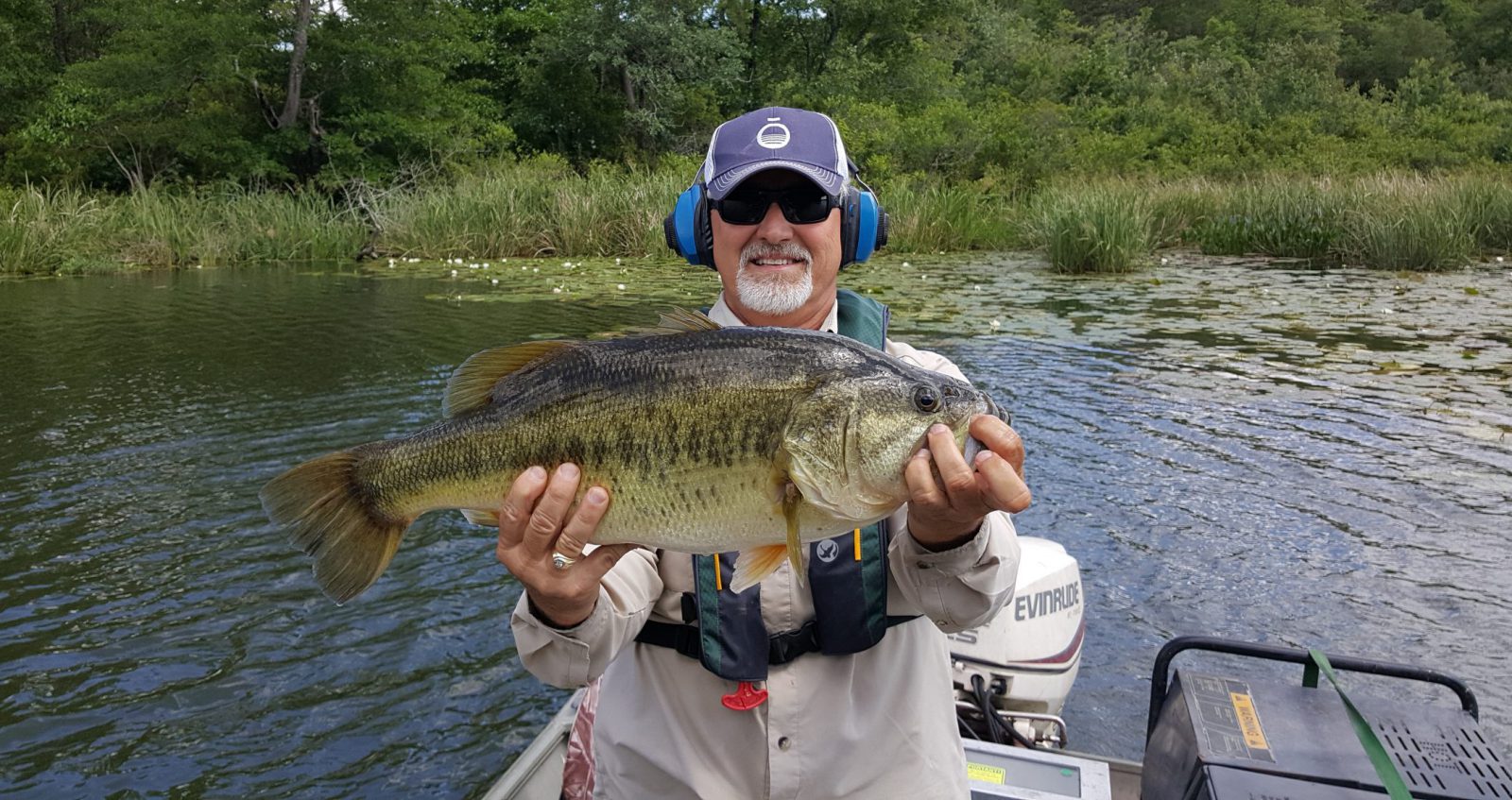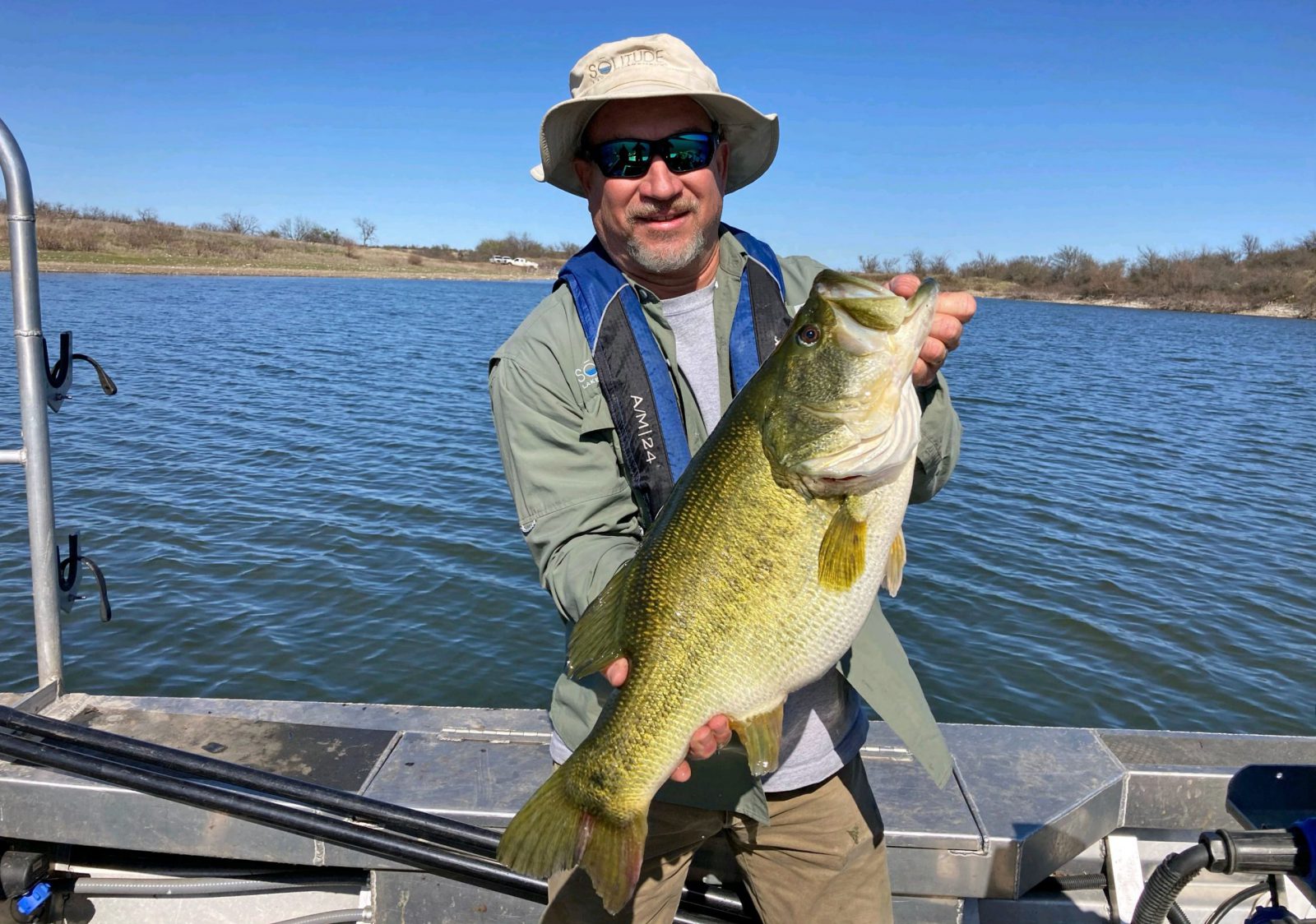
Trophy Largemouth Bass Fishery: Keys to Sustainability
AS SEEN IN Pond Boss Magazine: Written by Industry Expert Dave Beasley, Fisheries Biologist & Director of Fisheries
Complacency and trophy bass fishery are incompatible concepts that don’t belong in the same sentence. So, don’t let complacency sentence your trophy bass lake to an unsustainable destiny. While that may start off sounding a bit harsh, vigilance is a key to success in many aspects of life. That includes managing a trophy fishery. Just because you might figure out how to create a trophy fishery, it doesn’t necessarily follow that it will then sustain itself. Diligence is a key to long-term success.
Trophy fisheries have a way of captivating some pondmeisters and taking them on a meandering journey chock full of challenges and successes. Although most trophy fisheries require similar management techniques, each requires a strategy on their own schedule and at their own pace, resulting in a truly unique experience. Some fisheries struggle in one or more areas, while others rarely have an issue. For example, we’ve seen lakes whose Largemouth Bass tend toward producing too many fish of one size, which can interrupt growth rates of other size classes and severely disrupt the food chain. Subsequently, each fishery needs ongoing management to produce desired growth and catch rates. When a fishery is producing great fish, it is natural for anglers, managers, and biologists to assume the present management strategies will continue to yield great fishing.
To produce multiple generations of high-quality bass over the course of decades is very challenging, and is far less common than many pond owners and managers realize. Most professional fisheries management companies can produce one generation of trophy bass that are truly exceptional, resulting in a great fishery for six to ten years. For some, that is acceptable, but for most people, six years of amazing fishing followed by many years of mediocre fishing is not what they truly want. During that span of years, there’s a sizeable investment of time and money, and pondmeisters want to keep that string of success going.
For those who expect a trophy fishery that will last for many years, it is critical to really get to know the fishery. That means you need an understanding of how water stays healthy and at its peak for productivity. It means understanding how well the different species have reproduced, how many size classes of fish there are, and how each size class of each species is impacting the overall fishery. Either you, or your biologist, needs to understand as much about the fishery as possible, and then monitor it frequently enough to understand both when and how it is changing. When a fishery is at its prime, it means many things have come together over time to make the fishery great. Elements are falling into place at the current moment, but actions that were implemented years ago are contributing as well. A great fishery meeting its true potential is not a result of one or two years of good fisheries management, but rather a reflection of good decision-making over the course of many years. That’s healthy water, great habitat, an ever-producing food chain, the best genetics, and a thorough, thoughtful harvest program.

Far too often, owners and managers who develop trophy fisheries will allow complacency to settle in as soon as the fishing becomes great and the management tasks show signs of redundancy. The mindset becomes, “We made it!” Instead, that thought process should be more like, “We’re there, how do we keep it there?” It’s key to know that even though you think you reach that pinnacle, you can’t stay there without ongoing management strategy efforts. Complacency often has to do with budget. The reality of spending money to assess a fishery that does not appear to need help feels like a waste of money. For this reason, only those who truly understand how trophy fisheries work have the willpower to push through the times when the fishery is in a temporary rhythm. Many times, enthusiastic pondmeisters battle through the hardest years to get to the top of their fishery, and then, due to life, lose their focus on it. It’s surprising how quickly those fisheries decline.
Everyone seems to know that in order to produce a trophy fishery, you must create a productive waterbody that allows the forage base to thrive. The first catch is, this needed-productivity puts a strain on water quality, and poor water quality suppresses bass growth. As a result, one of the biggest keys to producing and maintaining trophy fisheries is establishing a balanced relationship between productivity and water quality. Not many people truly think about this aspect. If a bass is focused on surviving, it can’t be thriving. A lost day of growth cannot be made up. This is one area where complacency catches up to people. The relationship between productivity and water quality is fluid and can be difficult to gauge. Far too often, people base much of their success on a generation or two of bass, and pay less attention to other key variables that are harder to see. In reality, sometimes productivity is subpar, other times water quality is the problem. The better you understand your waterbody, the better you can manage your fishery and achieve the desired outcome.
Some waterbodies are naturally productive and can maintain a balance between producing fish and keeping the water quality healthy enough to maintain a stress-free environment. Think about the famous phosphate pits in Florida. In my experience, compared to waterbodies that are larger, have pond aeration, or have moderate water exchange via flow, waterbodies that are smaller, lack aeration, or have low flow tend to struggle with this balance between productivity and water quality over the years.
When it comes to monitoring a trophy fishery, there are a number of variables extending well beyond productivity and water quality. Some are general observations that can be picked up by someone who has developed an intuitive eye for what to look for, such as interpreting the plankton bloom, its impact on the fishery, and assessing the forage base. Other key points are straightforward and routine, and can be delegated with less need for intuitive observations, such as collecting water samples to send to the lab, and adjusting fish feeders. Create and maintain a monitoring program that takes all potential limiting factors into consideration. If done correctly, having this revolving baseline of information available at your fingertips can increase your odds of success tremendously. Limiting factors are: Declining water quality, improper fertility (meaning too much or too little at the wrong time), aquatic plant life overinfluencing habitat, poor spawns, empty feeders, the aeration system going down at the wrong time, as well as everything you know about monitoring your fish—lengths, weights, and ratios of the species and quantity of size classes of each species. Another limiting factor is not paying attention to harvesting your slot-limit fish at the right time. Who wants too many ten-inch bass overeating this year’s spawn of bluegills?

Involve an experienced biologist and utilize that expertise to interpret data and reinforce your management decisions. If possible, hold your pro accountable for your success. If you are committed to long term success, your biologist should be as well. The right biologist will outline what should be monitored, and give sound advice about what to change and when. Every waterbody has different needs, and balancing those needs with your goals and budget can be a challenge. Most likely, the biologist’s program includes monitoring the fish population via scientific sampling methods such as electrofishing, fyke nets, gill nets, shoreline seining, as well as watching growth rates, age classes, aquatic vegetation, plankton, and water quality. Thorough pros also pay attention and guide you through a nuisance wildlife trapping program, a harvesting strategy, and many other elements based on your mission.
It takes many years to create a trophy fishery, and it is a great accomplishment when achieved, but understand that without continual effort, trophy fisheries are not sustainable. When the process of producing trophy fish starts to feel easy, it is critical you understand that when you get that feeling, the fishery is vulnerable to failure. Mother Nature poses many challenges to successful fisheries, and unfortunately, once you achieve greatness, you must still stay focused and not assume you are on track for future success. If you truly want the best odds of achieving a sustainable trophy fishery, develop a high-quality monitoring program, and stick with it.
David Beasley has over 12 years of experience growing and managing successful trophy fisheries. David earned a Bachelor of Science degree in Fisheries and Aquaculture from State University of New York in Cobleskill and is currently the Director of Fisheries for SOLitude Lake Management, servicing the eastern United States and offering fisheries consultations nationwide.
SOLitude Lake Management is committed to providing full service lake and pond management solutions that improve water quality, preserve natural resources, and reduce our environmental footprint. Our services include lake, pond, wetland and fisheries management programs, algae and aquatic weed control, mechanical harvesting, hydro-raking, installation and maintenance of fountains and aeration systems, water quality testing and restoration, bathymetry, lake vegetation studies, biological assessments, habitat assessments, invasive species management and nuisance wildlife management. Services, consulting and aquatic products are available to clients nationwide, including homeowners associations, multi-family and apartment communities, golf courses, commercial developments, ranches, private landowners, reservoirs, recreational and public lakes, municipalities, parks, and state and federal agencies. Learn more about SOLitude Lake Management and purchase products at www.solitudelakemanagement.com.









